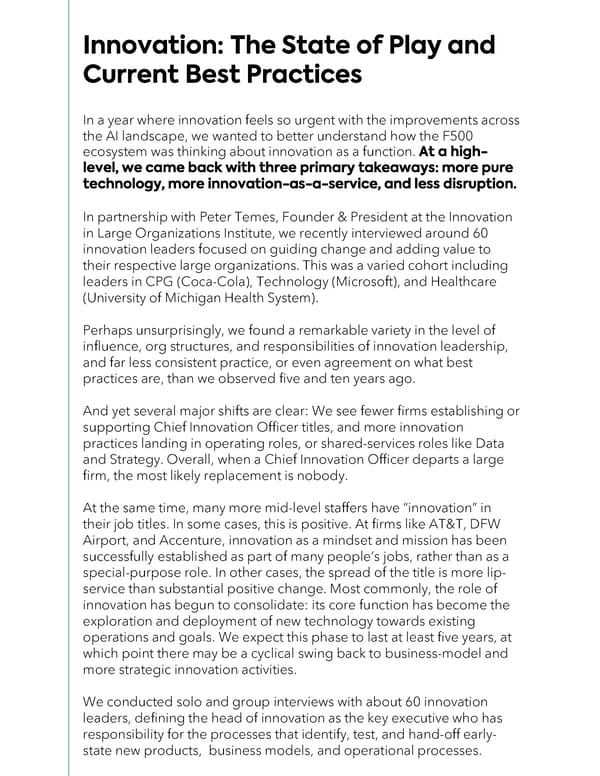In a year where innovation feels so urgent with the improvements across the AI landscape, we wanted to better understand how the F500 ecosystem was thinking about innovation as a function. In partnership with Peter Temes, Founder & President at the Innovation in Large Organizations Institute, we recently interviewed around 60 innovation leaders focused on guiding change and adding value to their respective large organizations. This was a varied cohort including leaders in CPG (Coca-Cola), Technology (Microsoft), and Healthcare (University of Michigan Health System). Perhaps unsurprisingly, we found a remarkable variety in the level of influence, org structures, and responsibilities of innovation leadership, and far less consistent practice, or even agreement on what best practices are, than we observed five and ten years ago. And yet several major shifts are clear: We see fewer firms establishing or supporting Chief Innovation Officer titles, and more innovation practices landing in operating roles, or shared-services roles like Data and Strategy. Overall, when a Chief Innovation Officer departs a large firm, the most likely replacement is nobody. At the same time, many more mid-level staffers have “innovation” in their job titles. In some cases, this is positive. At firms like AT&T, DFW Airport, and Accenture, innovation as a mindset and mission has been successfully established as part of many people’s jobs, rather than as a special-purpose role. In other cases, the spread of the title is more lip- service than substantial positive change. Most commonly, the role of innovation has begun to consolidate: its core function has become the exploration and deployment of new technology towards existing operations and goals. We expect this phase to last at least five years, at which point there may be a cyclical swing back to business-model and more strategic innovation activities. We conducted solo and group interviews with about 60 innovation leaders, defining the head of innovation as the key executive who has responsibility for the processes that identify, test, and hand-off early- state new products, business models, and operational processes.
 2024 IT Priorities and Adoption of Gen AI Page 30 Page 32
2024 IT Priorities and Adoption of Gen AI Page 30 Page 32